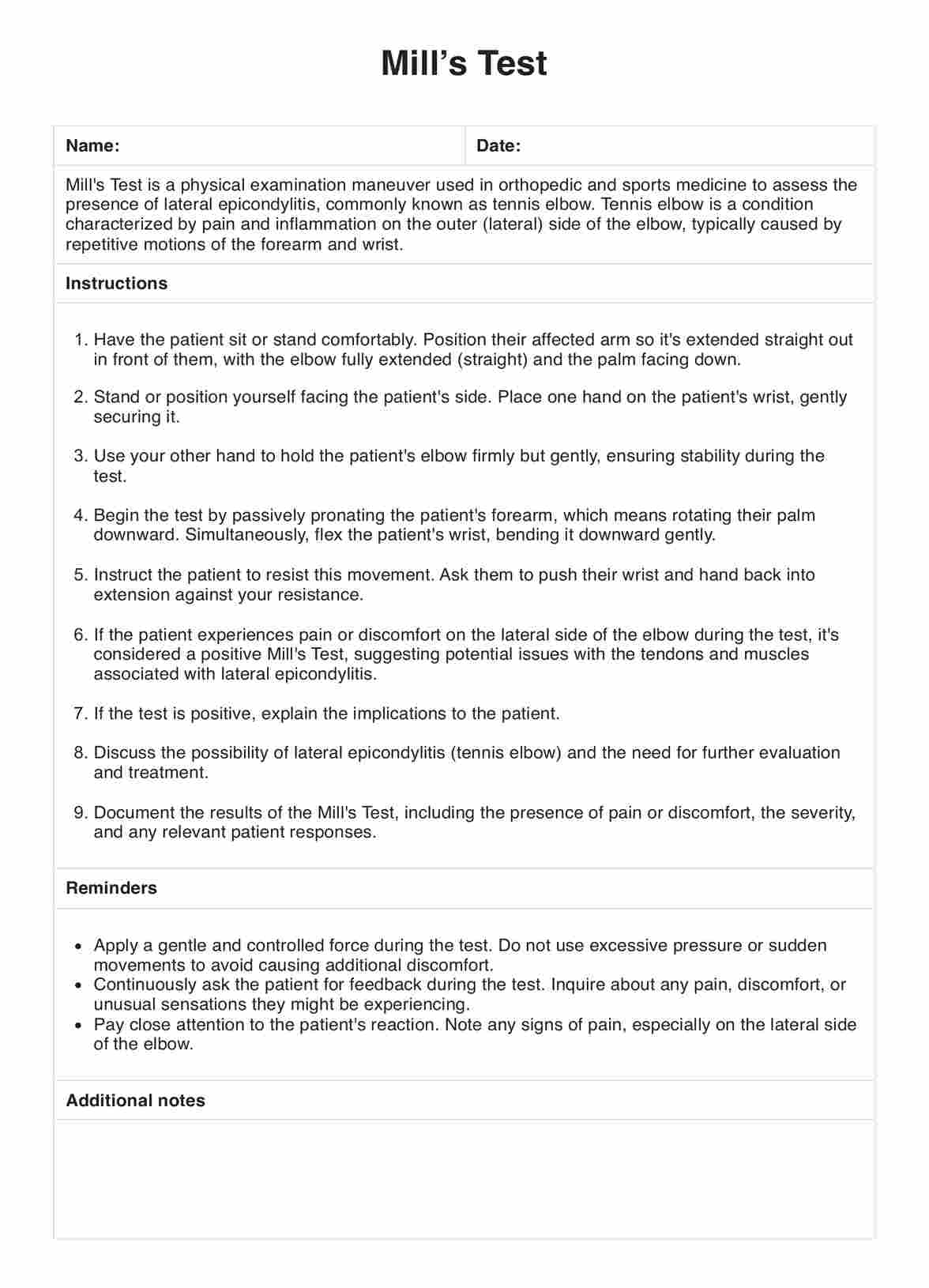Mill's Test is a straightforward exam to swiftly detect tennis elbow. Instruct the patient to fully extend their arm, then gently press their thumb and index finger while maintaining pressure as they flex and extend their elbow. Observe if they experience pain or discomfort during this motion, indicating tennis elbow likelihood.

Mill’s Test Template
Learn about Mill’s Test, a diagnostic technique for lateral epicondylitis (tennis elbow). Discover how to perform the test with a free PDF guide and example.
Mill’s Test Template Template
Commonly asked questions
While Mill's Test lacks a scoring system, you can interpret results based on pain or discomfort during the test. If the patient experiences pain, tennis elbow is probable. Nonetheless, further tests or imaging might be necessary for confirmation.
Mill's Test offers a reliable, simple way to diagnose tennis elbow. It aids in quick, accurate assessment and provides objective evidence for diagnosis. Furthermore, it facilitates progress monitoring and identifies the need for additional intervention.
EHR and practice management software
Get started for free
*No credit card required
Free
$0/usd
Unlimited clients
Telehealth
1GB of storage
Client portal text
Automated billing and online payments











